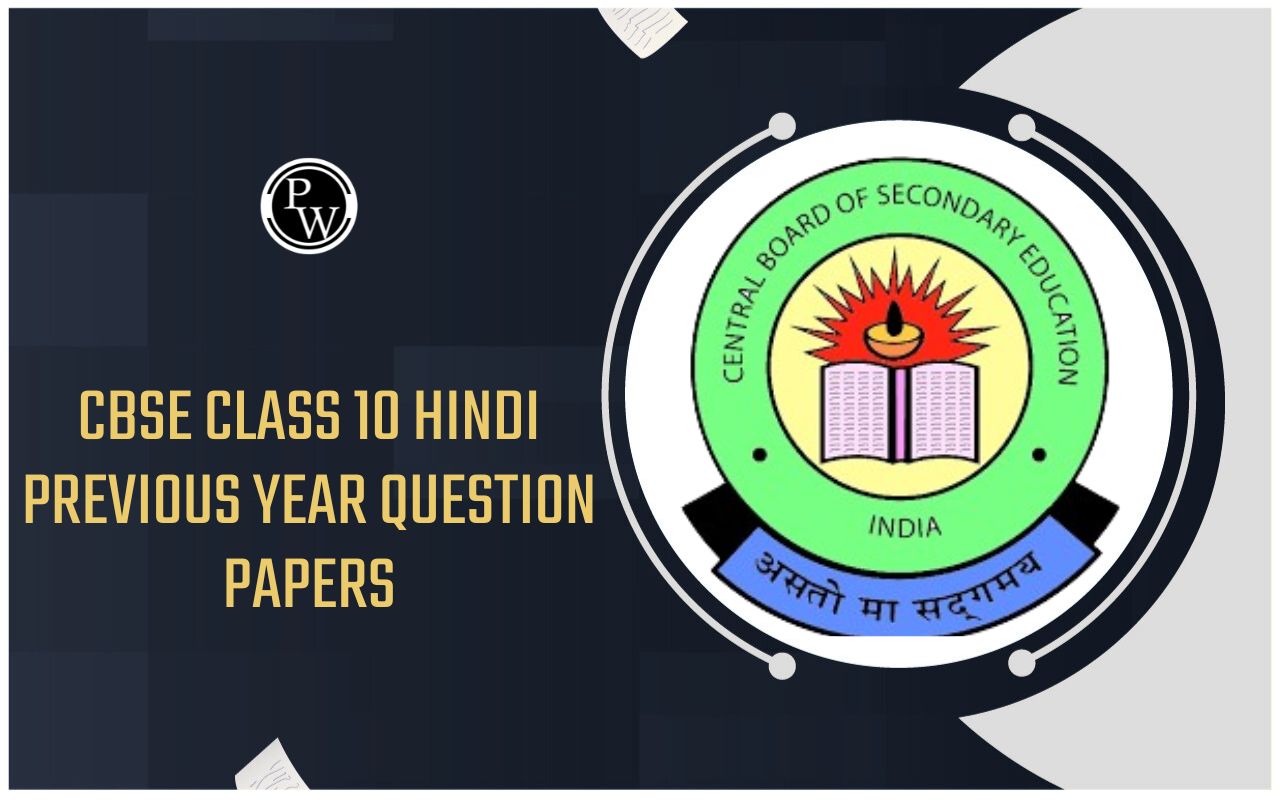
ICSE Class 10 Maths Selina Solutions Chapter 18: This ICSE Class 10 Maths Selina Solutions Chapter 18 discusses tangents and intersecting chords, as the title would imply. This ICSE Class 10 Maths Selina Solutions Chapter 18 covers some significant theorems about tangents and intersecting chords.
Pupils who are having trouble grasping the concepts in this chapter or others can consult the ICSE Class 10 Maths Selina Solutions Chapter 18, which were created by our subject matter experts. All the solutions are produced with an intent to enhance confidence for their ICSE preparations. Additionally, the ICSE Class 10 Maths Selina Solutions Chapter 18 helps pupils develop their problem-solving abilities, which are crucial for exams.ICSE Class 10 Maths Selina Solutions Chapter 18 Overview
ICSE Class 10 Maths Selina Solutions Chapter 18 focuses on tangents and intersecting chords within circles. It begins by explaining the properties of tangents, emphasizing that a tangent to a circle touches it at exactly one point and is perpendicular to the radius drawn to that point. The ICSE Class 10 Maths Selina Solutions Chapter 18 then delves into intersecting chords, exploring the relationships between chords, their segments, and the angles they form when they intersect inside or outside a circle. Key theorems, such as the intersecting chords theorem and the power of a point theorem, are introduced to facilitate calculations of segment lengths and angles. Practical applications of these concepts in real-life scenarios are highlighted, making the ICSE Class 10 Maths Selina Solutions Chapter 18 not only theoretical but also relevant to understanding geometric relationships essential for further studies in mathematics and practical fields.ICSE Class 10 Maths Selina Solutions Chapter 18 PDF
Below we have provided ICSE Class 10 Maths Selina Solutions Chapter 18 in detail. This chapter will help you to clear all your doubts regarding the chapter. Students are advised to prepare from these ICSE Class 10 Maths Selina Solutions Chapter 18 before the examinations to perform better.ICSE Class 10 Maths Selina Solutions Chapter 18 PDF
ICSE Class 10 Maths Selina Solutions Chapter 18 Exercise 18A
Below we have provided ICSE Class 10 Maths Selina Solutions Chapter 18. Students are advised to thoroughly practice the questions of ICSE Class 10 Maths Selina Solutions Chapter 18.1. The radius of a circle is 8cm. Calculate the length of a tangent drawn to this circle from a point at a distance of 10cm from its centre.
Solution:
Given, a circle with centre O and radius 8 cm. An external point P from where a tangent is drawn to meet the circle at T. OP = 10 cm; radius OT = 8 cm As OT ⊥ PT In right ∆OTP, we have OP 2 = OT 2 + PT 2 [By Pythagoras Theorem] 10 2 = 8 2 + PT 2 PT 2 = 100 – 64 = 36 So, PT = 6 Therefore, length of tangent = 6 cm.2. In the given figure, O is the centre of the circle and AB is a tangent to the circle at B. If AB = 15 cm and AC = 7.5 cm, calculate the radius of the circle.
Solution:
Given, AB = 15 cm, AC = 7.5 cm Let’s assume the radius of the circle to be ‘r’. So, AO = AC + OC = 7.5 + r In right ∆AOB, we have AO 2 = AB 2 + OB 2 [By Pythagoras Theorem] (7.5 + r) 2 = 15 2 + r 2 56.25 + r 2 + 15r = 225 + r 2 15r = 225 – 56.25 r = 168.75/ 15 Thus, r = 11.25 cm3. Two circles touch each other externally at point P. Q is a point on the common tangent through P. Prove that the tangents QA and QB are equal.
Solution:
Let Q be the point from which, QA and QP are two tangents to the circle with centre O So, QA = QP …..(a) Similarly, from point Q, QB and QP are two tangents to the circle with centre O’ So, QB = QP ……(b) From (a) and (b), we have QA = QB Therefore, tangents QA and QB are equal. – Hence Proved4. Two circles touch each other internally. Show that the tangents drawn to the two circles from any point on the common tangent are equal in length.
Let Q be the point on the common tangent from which, two tangents QA and QP are drawn to the circle with centre O. So, QA = QP ……. (1) Similarly, from point Q, QB and QP are two tangents to the circle with centre O’ So, QB = QP ……. (2) From (1) and (2), we have QA = QB Therefore, tangents QA and QB are equal. – Hence Proved5. Two circles of radii 5 cm and 3 cm are concentric. Calculate the length of a chord of the outer circle which touches the inner.
Given, OS = 5 cm and OT = 3 cm In right triangle OST, we have ST 2 = OS 2 – OT 2 = 25 – 9 = 16 So, ST = 4 cm As we know, OT is perpendicular to SP and OT bisects chord SP Hence, SP = 2 x ST = 8 cm6. Three circles touch each other externally. A triangle is formed when the centers of these circles are joined together. Find the radii of the circles, if the sides of the triangle formed are 6 cm, 8 cm and 9 cm.
Solution:
Let ABC be the triangle formed when centres of 3 circles are joined. Given, AB = 6 cm, AC = 8 cm and BC = 9 cm And let the radii of the circles having centres A, B and C be r 1 , r 2 and r 3 respectively. So, we have r 3 + r 2 = 9 r 2 + r 1 = 6 Adding all the above equations, we get r 1 + r 3 + r 3 + r 2 + r 2 + r 1 = 8 + 9 + 6 2(r 1 + r 2 + r 3 ) = 23 So, r 1 + r 2 + r 3 = 11.5 cm Now, r 1 + 9 = 11.5 (As r 2 + r 3 = 9) r 1 = 2.5 cm And, r 2 + 6 = 11.5 (As r 1 + r 3 = 6) r 2 = 5.5 cm Lastly, r 3 + 8 = 11.5 (As r 2 + r 1 = 8) r 3 = 3.5 cm Therefore, the radii of the circles are r 1 = 2.5 cm, r 2 = 5.5 cm and r 3 = 3.5 cm.7. If the sides of a quadrilateral ABCD touch a circle, prove that AB + CD = BC + AD.
Solution:
Let a circle touch the sides AB, BC, CD and DA of quadrilateral ABCD at P, Q, R and S respectively. As, AP and AS are tangents to the circle from an external point A, we have AP = AS ……. (1) Similarly, we also get BP = BQ ……. (2) CR = CQ ……. (3) DR = DS …….. (4) Adding (1), (2), (3) and (4), we get AP + BP + CR + DR = AS + DS + BQ + CQ AB + CD = AD + BC Therefore, AB + CD = AD + BC – Hence Proved8. If the sides of a parallelogram touch a circle, prove that the parallelogram is a rhombus.
Solution:
Let a circle touch the sides AB, BC, CD and DA of parallelogram ABCD at P, Q, R and S respectively. Now, from point A, AP and AS are tangents to the circle. So, AP = AS……. (1) Similarly, we also have BP = BQ ……… (2) DR = DS ……… (4) Adding (1), (2), (3) and (4), we get AP + BP + CR + DR = AS + DS + BQ + CQ AB + CD = AD + BC Therefore, AB + CD = AD + BC But AB = CD and BC = AD……. (5) [Opposite sides of a parallelogram] Hence, AB + AB = BC + BC 2AB = 2 BC AB = BC …….. (6) From (5) and (6), we conclude that AB = BC = CD = DA Thus, ABCD is a rhombus.9. From the given figure prove that:
AP + BQ + CR = BP + CQ + AR.
Also, show that AP + BQ + CR = ½ x perimeter of triangle ABC.
Solution:
As from point B, BQ and BP are the tangents to the circle We have, BQ = BP ………..(1) Similarly, we also get AP = AR ………….. (2) And, CR = CQ …… (3) Adding (1), (2) and (3) we get, AP + BQ + CR = BP + CQ + AR ……… (4) Now, adding AP + BQ + CR to both sides in (4), we get 2(AP + BQ + CR) = AP + PQ + CQ + QB + AR + CR 2(AP + BQ + CR) = AB + BC + CA Therefore, we get AP + BQ + CR = ½ x (AB + BC + CA) i.e. AP + BQ + CR = ½ x perimeter of triangle ABC10. In the figure, if AB = AC then prove that BQ = CQ.
Solution:
As, from point A AP and AR are the tangents to the circle So, we have AP = AR Similarly, we also have BP = BQ and CR = CQ [From points B and C] Now adding the above equations, we get AP + BP + CQ = AR + BQ + CR (AP + BP) + CQ = (AR + CR) + BQ AB + CQ = AC + BQ ….. (i) But, as AB = AC [Given] Therefore, from (i) CQ = BQ or BQ = CQ11. Radii of two circles are 6.3 cm and 3.6 cm. State the distance between their centers if –
i) they touch each other externally.
ii) they touch each other internally.
Solution:
Given, Radius of bigger circle = 6.3 cm and of smaller circle = 3.6 cm i) When the two circles touch each other at P externally. O and O’ are the centers of the circles. Join OP and O’P. So, OP = 6.3 cm, O’P = 3.6 cm Hence, the distance between their centres (OO’) is given by OO’ = OP + O’P = 6.3 + 3.6 = 9.9 cm ii) When the two circles touch each other at P internally. O and O’ are the centers of the circles. Join OP and O’P So, OP = 6.3 cm, O’P = 3.6 cm Hence, the distance between their centres (OO’) is given by OO’ = OP – O’P = 6.3 – 3.6 = 2.7 cm12. From a point P outside the circle, with centre O, tangents PA and PB are drawn. Prove that:
i) ∠AOP = ∠BOP
ii) OP is the ⊥ bisector of chord AB.
Solution:
i) In ∆AOP and ∆BOP, we have AP = BP [Tangents from P to the circle] OP = OP [Common] OA = OB [Radii of the same circle] Hence, by SAS criterion of congruence ΔAOP ≅ ΔBOP So, by C.P.C.T we have ∠AOP = ∠BOP ii) In ∆OAM and ∆OBM, we have OA = OB [Radii of the same circle] ∠AOM = ∠BOM [Proved ∠AOP = ∠BOP] OM = OM [Common] Hence, by SAS criterion of congruence ΔOAM ≅ ΔOBM So, by C.P.C.T we have AM = MB And ∠OMA = ∠OMB But, ∠OMA + ∠OMB = 180 o Thus, ∠OMA = ∠OMB = 90 o Therefore, OM or OP is the perpendicular bisector of chord AB. – Hence ProvedICSE Class 10 Maths Selina Solutions Chapter 18 Exercise 18B
Below we have provided ICSE Class 10 Maths Selina Solutions Chapter 18. Students are advised to thoroughly practice the questions of ICSE Class 10 Maths Selina Solutions Chapter 18.1. (i) In the given figure, 3 x CP = PD = 9 cm and AP = 4.5 cm. Find BP.
(ii) In the given figure, 5 x PA = 3 x AB = 30 cm and PC = 4cm. Find CD.
(iii) In the given figure, tangent PT = 12.5 cm and PA = 10 cm; find AB.
Solution:
(i) As the two chords AB and CD intersect each other at P, we have AP x PB = CP x PD 4.5 x PB = 3 x 9 [3CP = 9 cm so, CP = 3 cm] PB = (3 x 9)/ 4.5 = 6 cm (ii) As the two chords AB and CD intersect each other at P, we have AP x PB = CP x PD But, 5 x PA = 3 x AB = 30 cm So, PA = 30/5 = 6 cm and AB = 30/3 = 10 cm And, BP = PA + AB = 6 + 10 = 16 cm Now, as AP x PB = CP x PD 6 x 16 = 4 x PD PD = (6 x 16)/ 4 = 24 cm CD = PD – PC = 24 – 4 = 20 cm (iii) As PAB is the secant and PT is the tangent, we have PT 2 = PA x PB 12.5 2 = 10 x PB PB = (12.5 x 12.5)/ 10 = 15.625 cm AB = PB – PA = 15.625 – 10 = 5.625 cm2. In the given figure, diameter AB and chord CD of a circle meet at P. PT is a tangent to the circle at T. CD = 7.8 cm, PD = 5 cm, PB = 4 cm.
Find
(i) AB.
(ii) the length of tangent PT.
Solution:
(i) PA = AB + BP = (AB + 4) cm PC = PD + CD = 5 + 7.8 = 12.8 cm As PA x PB = PC x PD (AB + 4) x 4 = 12.8 x 5 AB + 4 = (12.8 x 5)/ 4 AB + 4 = 16 Hence, AB = 12 cm (ii) As we know, PT 2 = PC x PD PT 2 = 12.8 x 5 = 64 Thus, PT = 8 cm3. In the following figure, PQ is the tangent to the circle at A, DB is a diameter and O is the centre of the circle. If ∠ADB = 30 o and ∠CBD = 60 o ; calculate:
i) ∠QAB
ii) ∠PAD
iii) ∠CDB
Solution:
(i) Given, PAQ is a tangent and AB is the chord ∠QAB = ∠ADB = 30 o [Angles in the alternate segment] (ii) OA = OD [radii of the same circle] So, ∠OAD = ∠ODA = 30 o But, as OA ⊥ PQ ∠PAD = ∠OAP – ∠OAD = 90 o – 30 o = 60 o (iii) As BD is the diameter, we have ∠BCD = 90 o [Angle in a semi-circle] Now in ∆BCD, ∠CDB + ∠CBD + ∠BCD = 180 o ∠CDB + 60 o + 90 o = 180 o Thus, ∠CDB = 180 o – 150 o = 30 o4. If PQ is a tangent to the circle at R; calculate:
i) ∠PRS
ii) ∠ROT
Given: O is the centre of the circle and ∠TRQ = 30 o
Solution:
(i) As PQ is the tangent and OR is the radius. So, OR ⊥ PQ ∠ORT = 90 o ∠TRQ = 90 o – 30 o = 60 o But in ∆OTR, we have OT = OR [Radii of same circle] ∠OTR = 60 o or ∠STR = 60 o But, ∠PRS = ∠STR = 60 o [Angles in the alternate segment] (ii) In ∆OTR, ∠ORT = 60 o ∠OTR = 60 o Thus, ∠ROT = 180 o – (60 o + 60 o ) = 180 o – 120 o = 60 o5. AB is diameter and AC is a chord of a circle with centre O such that angle BAC=30º. The tangent to the circle at C intersects AB produced in D. Show that BC = BD.
Solution:
Join OC. ∠BAC = 30 o [Angles in the alternate segment] It’s seen that, arc BC subtends ∠DOC at the center of the circle and ∠BAC at the remaining part of the circle. So, ∠BOC = 2∠BAC = 2 x 30 o = 60 o Now, in ∆OCD ∠BOC or ∠DOC = 60 o ∠OCD = 90 o [OC ⊥ CD] ∠DOC + ∠ODC = 90 o ∠ODC = 90 o – 60 o = 30 o Now, in ∆BCD As ∠ODC or ∠BDC = ∠BCD = 30 o Therefore, BC = BD6. Tangent at P to the circumcircle of triangle PQR is drawn. If this tangent is parallel to side QR, show that triangle PQR is isosceles.
Solution:
Let DE be the tangent to the circle at P. And, DE || QR [Given] ∠EPR = ∠PRQ [Alternate angles are equal] ∠DPQ = ∠PQR [Alternate angles are equal] ….. (i) Let ∠DPQ = x and ∠EPR = y As the angle between a tangent and a chord through the point of contact is equal to the angle in the alternate segment, we have ∠DPQ = ∠PRQ …… (ii) [DE is tangent and PQ is chord] So, from (i) and (ii), ∠PQR = ∠PRQ PQ = PR Therefore, triangle PQR is an isosceles triangle.7. Two circles with centres O and O’ are drawn to intersect each other at points A and B.
Centre O of one circle lies on the circumference of the other circle and CD is drawn tangent to the circle with centre O’ at A. Prove that OA bisects angle BAC.
Solution:
Join OA, OB, O’A, O’B and O’O. CD is the tangent and AO is the chord. ∠OAC = ∠OBA … (i) [Angles in alternate segment] In ∆OAB, OA = OB [Radii of the same circle] ∠OAB = ∠OBA ….. (ii) From (i) and (ii), we have ∠OAC = ∠OAB Thus, OA is the bisector of ∠BAC.8. Two circles touch each other internally at a point P. A chord AB of the bigger circle intersects the other circle in C and D. Prove that: ∠CPA = ∠DPB
Solution:
Let’s draw a tangent TS at P to the circles given. As TPS is the tangent and PD is the chord, we have ∠PAB = ∠BPS …. (i) [Angles in alternate segment] Similarly, ∠PCD = ∠DPS …. (ii) Now, subtracting (i) from (ii) we have ∠PCD – ∠PAB = ∠DPS – ∠BPS But in ∆PAC, Ext. ∠PCD = ∠PAB + ∠CPA ∠PAB + ∠CPA – ∠PAB = ∠DPS – ∠BPS Thus, ∠CPA = ∠DPBICSE Class 10 Maths Selina Solutions Chapter 18 Exercise 18C
Below we have provided ICSE Class 10 Maths Selina Solutions Chapter 18. Students are advised to thoroughly practice the questions of ICSE Class 10 Maths Selina Solutions Chapter 18.1. Prove that, of any two chords of a circle, the greater chord is nearer to the center.
Solution:
and CD are two chords such that AB > CD. Also, OM ⊥ AB and ON ⊥ CD. Required to prove: OM < ON Proof: Join OA and OC. Then in right ∆AOM, we have AO 2 = AM 2 + OM 2 r 2 = (½AB) 2 + OM 2 r 2 = ¼ AB 2 + OM 2 ….. (i) Again, in right ∆ONC, we have OC 2 = NC 2 + ON 2 r 2 = (½CD) 2 + ON 2 r 2 = ¼ CD 2 + ON 2 ….. (ii) On equating (i) and (ii), we get ¼ AB 2 + OM 2 = ¼ CD 2 + ON 2 But, AB > CD [Given] So, ON will be greater than OM to be equal on both sides. Thus, OM < ON Hence, AB is nearer to the centre than CD.2. OABC is a rhombus whose three vertices A, B and C lie on a circle with centre O.
i) If the radius of the circle is 10 cm, find the area of the rhombus.
ii) If the area of the rhombus is 32√3 cm 2 , find the radius of the circle.
Solution:
(i) Given, radius = 10 cm In rhombus OABC, OC = 10 cm So, OE = ½ x OB = ½ x 10 = 5 cm Now, in right ∆OCE OC 2 = OE 2 + EC 2 10 2 = 5 2 + EC 2 EC 2 = 100 – 25 = 75 EC = √75 = 5√3 Hence, AC = 2 x EC = 2 x 5√3 = 10√3 We know that, Area of rhombus = ½ x OB x AC = ½ x 10 x 10√3 = 50√3 cm 2 ≈ 86.6 cm 2 (ii) We have the area of rhombus = 32√3 cm 2 But area of rhombus OABC = 2 x area of ∆OAB Area of rhombus OABC = 2 x (√3/4) r 2 Where r is the side of the equilateral triangle OAB. 2 x (√3/4) r 2 = 32√3 √3/2 r 2 = 32√3 r 2 = 64 r = 8 Therefore, the radius of the circle is 8 cm.3. Two circles with centers A and B, and radii 5 cm and 3 cm, touch each other internally. If the perpendicular bisector of the segment AB meets the bigger circle in P and Q; find the length of PQ.
Solution:
We know that, If two circles touch internally, then distance between their centres is equal to the difference of their radii. So, AB = (5 – 3) cm = 2 cm. Also, the common chord PQ is the perpendicular bisector of AB. Thus, AC = CB = ½ AB = 1 cm In right ∆ACP, we have AP 2 = AC 2 + CP 2 [Pythagoras Theorem] 5 2 = 1 2 + CP 2 CP 2 = 25 – 1 = 24 CP = √24 cm = 2√6 cm Now, PQ = 2 CP = 2 x 2√6 cm = 4√6 cm Therefore, the length of PQ is 4√6 cm.4. Two chords AB and AC of a circle are equal. Prove that the center of the circle, lies on the bisector of the angle BAC.
Solution:
(O, r). Required to prove: Centre, O lies on the bisector of ∠BAC. Construction: Join BC. Let the bisector of ∠BAC intersects BC in P. Proof: In ∆APB and ∆APC, AB = AC [Given] ∠BAP = ∠CAP [Given] AP = AP [Common] Hence, ∆APB ≅ ∆APC by SAA congruence criterion So, by CPCT we have BP = CP and ∠APB = ∠APC And, ∠APB + ∠APC = 180 [Linear pair]
2∠APB = 180
[Linear pair]
2∠APB = 180
 [∠APB = ∠APC]
∠APB = 90
Now, BP = CP and ∠APB = 90
Therefore, AP is the perpendicular bisector of chord BC.
Hence, AP passes through the centre, O of the circle.
[∠APB = ∠APC]
∠APB = 90
Now, BP = CP and ∠APB = 90
Therefore, AP is the perpendicular bisector of chord BC.
Hence, AP passes through the centre, O of the circle.
5. The diameter and a chord of circle have a common end-point. If the length of the diameter is 20 cm and the length of the chord is 12 cm, how far is the chord from the center of the circle?
Solution:
We have, AB as the diameter and AC as the chord. Now, draw OL ⊥ AC Since OL ⊥ AC and hence it bisects AC, O is the centre of the circle. Therefore, OA = 10 cm and AL = 6 cm Now, in right ∆OLA AO 2 = AL 2 + OL 2 [By Pythagoras Theorem] 10 2 = 6 2 + OL 2 OL 2 = 100 – 36 = 64 OL = 8 cm Therefore, the chord is at a distance of 8 cm from the centre of the circle.6. ABCD is a cyclic quadrilateral in which BC is parallel to AD, angle ADC = 110 o and angle BAC = 50 o . Find angle DAC and angle DCA.
Solution:
Given, ABCD is a cyclic quadrilateral in which AD || BC And, ∠ADC = 110 o , ∠BAC = 50 o We know that, ∠B + ∠D = 180 o [Sum of opposite angles of a quadrilateral] ∠B + 110 o = 180 o So, ∠B = 70 o Now in ∆ADC, we have ∠BAC + ∠ABC + ∠ACB = 180 o 50 o + 70 o + ∠ACB = 180 o ∠ACB = 180 o – 120 o = 60 o And, as AD || BC we have ∠DAC = ∠ACB = 60 o [Alternate angles] Now in ∆ADC, ∠DAC + ∠ADC + ∠DCA = 180 o 60 o + 110 o + ∠DCA = 180 o Thus, ∠DCA = 180 o – 170 o = 10 o7. In the given figure, C and D are points on the semi-circle described on AB as diameter.
Given angle BAD = 70 o and angle DBC = 30 o , calculate angle BDC.
As ABCD is a cyclic quadrilateral, we have ∠BCD + ∠BAD = 180 [Opposite angles of a cyclic quadrilateral are supplementary]
∠BCD + 70
o
= 180
[Opposite angles of a cyclic quadrilateral are supplementary]
∠BCD + 70
o
= 180
 ∠BCD = 180
o
– 70
o
= 110
o
And, by angle sum property of ∆BCD we have
∠CBD + ∠BCD + ∠BDC = 180
o
30
o
+ 110
o
+ ∠BDC = 180
o
∠BDC = 180
o
– 140
o
Thus,
∠BDC = 40
o
∠BCD = 180
o
– 70
o
= 110
o
And, by angle sum property of ∆BCD we have
∠CBD + ∠BCD + ∠BDC = 180
o
30
o
+ 110
o
+ ∠BDC = 180
o
∠BDC = 180
o
– 140
o
Thus,
∠BDC = 40
o
8. In cyclic quadrilateral ABCD, ∠ A = 3 ∠ C and ∠ D = 5 ∠ B. Find the measure of each angle of the quadrilateral.
Solution:
Given, cyclic quadrilateral ABCD So, ∠A + ∠C = 180 o [Opposite angles in a cyclic quadrilateral is supplementary] 3∠C + ∠C = 180 o [As ∠A = 3 ∠C] ∠C = 45 o Now, ∠A = 3 ∠C = 3 x 45 o ∠A = 135 o Similarly, ∠B + ∠D = 180 o [As ∠D = 5 ∠B] ∠B + 5∠B = 180 o 6∠B = 180 o ∠B = 30 o Now, ∠D = 5∠B = 5 x 30 o ∠D = 150 o Therefore, ∠A = 135 o , ∠B = 30 o , ∠C = 45 o , ∠D = 150 o9. Show that the circle drawn on any one of the equal sides of an isosceles triangle as diameter bisects the base.
Solution:
Let’s join AD. And. AB is the diameter. We have ∠ADB = 90º [Angle in a semi-circle] But, ∠ADB + ∠ADC = 180º [Linear pair] So, ∠ADC = 90º Now, in ∆ABD and ∆ACD we have ∠ADB = ∠ADC [each 90º] AB = AC [Given] AD = AD [Common] Hence, ∆ABD ≅ ∆ACD by RHS congruence criterion So, by C.P.C.T BD = DC Therefore, the circle bisects base BC at D.10. Bisectors of vertex angles A, B and C of a triangle ABC intersect its circumcircle at points D, E and F respectively. Prove that angle EDF = 90 o – ½ ∠A
Solution:
EC. ∠EBF = ∠ECF = ∠EDF ….. (i) [Angle in the same segment] In cyclic quadrilateral AFBE, ∠EBF + ∠EAF = 180 o …… (ii) [Sum of opposite angles in a cyclic quadrilateral is supplementary] Similarly in cyclic quadrilateral CEAF, ∠EAF + ∠ECF = 180 o ……. (iii) Adding (ii) and (iii) we get, ∠EBF + ∠ECF + 2∠EAF = 360 o ∠EDF + ∠EDF + 2∠EAF = 360 o [From (i)] ∠EDF + ∠EAF = 180 o ∠EDF + ∠1 + ∠BAC + ∠2 = 180 o But, ∠1 = ∠3 and ∠2 and ∠4 [Angles in the same segment] ∠EDF + ∠3 + ∠BAC + ∠4 = 180 o But, ∠4 = ½ ∠C, ∠3 = ½ ∠B Thus, ∠EDF + ½ ∠B + ∠BAC + ½ ∠C = 180 o ∠EDF + ½ ∠B + 2 x ½ ∠A + ½ ∠C = 180 o ∠EDF + ½ (∠A + ∠B + ∠C) + ½ ∠A = 180 o ∠EDF + ½ (180 o ) + ½ ∠A = 180 o ∠EDF + 90 o + ½ ∠A = 180 o ∠EDF = 180 o – (90 o + ½ ∠A) ∠EDF = 90 o – ½ ∠A11. In the figure, AB is the chord of a circle with centre O and DOC is a line segment such that BC = DO. If ∠C = 20 o , find angle AOD.
Join OB. In ∆OBC, we have BC = OD = OB [Radii of the same circle] ∠BOC = ∠BCO = 20 o And ext. ∠ABO = ∠BCO + ∠BOC Ext. ∠ABO = 20 o + 20 o = 40 o ….. (1) Now in ∆OAB, OA = OB [Radii of the same circle] ∠OAB = ∠OBA = 40 o [from (1)] ∠AOB = 180 o – 40 o – 40 o = 100 o As DOC is a straight line, ∠AOD + ∠AOB + ∠BOC = 180 o ∠AOD + 100 o + 20 o = 180 o ∠AOD = 180 o – 120 o Thus, ∠AOD = 60 o12. Prove that the perimeter of a right triangle is equal to the sum of the diameter of its incircle and twice the diameter of its circumcircle.
Let’s join OL, OM and ON. And, let D and d be the diameter of the circumcircle and incircle. Also, let R and r be the radius of the circumcircle and incircle. Now, in circumcircle of ∆ABC, ∠B = 90 o Thus, AC is the diameter of the circumcircle i.e. AC = D Let the radius of the incircle be ‘r’ OL = OM = ON = r Now, from B, BL and BM are the tangents to the incircle. So, BL = BM = r Similarly, AM = AN and CL = CN = R [Tangents from the point outside the circle] Now, AB + BC + CA = AM + BM + BL + CL + CA = AN + r + r + CN + CA = AN + CN + 2r + CA = AC + AC + 2r = 2AC + 2r = 2D + d – Hence Proved13. P is the midpoint of an arc APB of a circle. Prove that the tangent drawn at P will be parallel to the chord AB.
First join AP and BP. As TPS is a tangent and PA is the chord of the circle. ∠BPT = ∠PAB [Angles in alternate segments] But, ∠PBA = ∠PAB [Since PA = PB] Thus, ∠BPT = ∠PBA But these are alternate angles, Hence, TPS || AB14. In the given figure, MN is the common chord of two intersecting circles and AB is their common tangent.
Prove that the line NM produced bisects AB at P.
Solution:
From P, AP is the tangent and PMN is the secant for first circle. AP 2 = PM x PN …. (1) Again from P, PB is the tangent and PMN is the secant for second circle. PB 2 = PM x PN …. (2) From (i) and (ii), we have AP 2 = PB 2 AP = PB Thus, P is the midpoint of AB.15. In the given figure, ABCD is a cyclic quadrilateral, PQ is tangent to the circle at point C and BD is its diameter. If ∠DCQ = 40 o and ∠ABD = 60 o , find:
i) ∠DBC
ii) ∠BCP
iii) ∠ADB
Solution:
∠DCQ = ∠DBC [Angles in the alternate segment] ∠DBC = 40 o [As ∠DCQ = 40 o ] (ii) ∠DCQ + ∠DCB + ∠BCP = 180 o 40 o + 90 o + ∠BCP = 180 o [As ∠DCB = 90 o ] ∠BCP = 180 o – 130 o = 50 o (iii) In ∆ABD, ∠BAD = 90 o [Angle in a semi-circle], ∠ABD = 60 o [Given] ∠ADB = 180 o – (90 o + 60 o ) ∠ADB = 180 o – 150 o = 30 o16. The given figure shows a circle with centre O and BCD is a tangent to it at C. Show that: ∠ACD + ∠BAC = 90 o
BCD is the tangent and OC is the radius. As, OC ⊥ BD ∠OCD = 90 o ∠OCD + ∠ACD = 90 o …. (i) But, in ∆OCA OA = OC [Radii of the same circle] Thus, ∠OCA = ∠OAC Substituting in (i), we get ∠OAC + ∠ACD = 90 o Hence, ∠BAC + ∠ACD = 90 o17. ABC is a right triangle with angle B = 90º. A circle with BC as diameter meets by hypotenuse AC at point D. Prove that:
i) AC x AD = AB 2
ii) BD 2 = AD x DC.
Solution:
i) In ∆ABC, we have ∠B = 90 o and BC is the diameter of the circle. Hence, AB is the tangent to the circle at B. Now, as AB is tangent and ADC is the secant we have AB 2 = AD x AC ii) In ∆ADB, ∠D = 90 o So, ∠A + ∠ABD = 90 o …… (i) But in ∆ABC, ∠B = 90 o ∠A + ∠C = 90 o ……. (ii) From (i) and (ii), ∠C = ∠ABD Now in ∆ABD and ∆CBD, we have ∠BDA = ∠BDC = 90 o ∠ABD = ∠BCD Hence, ∆ABD ~ ∆CBD by AA postulate So, we have BD/DC = AD/BD Therefore, BD 2 = AD x DC18. In the given figure, AC = AE.
Show that:
i) CP = EP
ii) BP = DP
Solution:
In ∆ADC and ∆ABE, ∠ACD = ∠AEB [Angles in the same segment] AC = AE [Given] ∠A = ∠A [Common] Hence, ∆ADC ≅ ∆ABE by ASA postulate So, by C.P.C.T we have AB = AD But, AC = AE [Given] So, AC – AB = AE – AD BC = DE In ∆BPC and ∆DPE, ∠C = ∠E [Angles in the same segment] BC = DE ∠CBP = ∠CDE [Angles in the same segment] Hence, ∆BPC ≅ ∆DPE by ASA postulate So, by C.P.C.T we have BP = DP and CP = PE19. ABCDE is a cyclic pentagon with centre of its circumcircle at point O such that AB = BC = CD and angle ABC = 120 o
Calculate:
i) ∠BEC
ii) ∠BED
Solution:
i) Join OC and OB. AB = BC = CD and ∠ABC = 120 o [Given] So, ∠BCD = ∠ABC = 120 o OB and OC are the bisectors of ∠ABC and ∠BCD and respectively. So, ∠OBC = ∠BCO = 60 o In ∆BOC, ∠BOC = 180 o – (∠OBC + ∠BOC) ∠BOC = 180 o – (60 o + 60 o ) = 180 o – 120 o ∠BOC = 60 o Arc BC subtends ∠BOC at the centre and ∠BEC at the remaining part of the circle. ∠BEC = ½ ∠BOC = ½ x 60 o = 30 o ii) In cyclic quadrilateral BCDE, we have ∠BED + ∠BCD = 180 o ∠BED + 120 o = 180 o Thus, ∠BED = 60 o20. In the given figure, O is the centre of the circle. Tangents at A and B meet at C. If angle ACO = 30 o , find:
(i) angle BCO
(ii) angle AOB
(iii) angle APB
Solution:
In the given fig, O is the centre of the circle and, CA and CB are the tangents to the circle from C. Also, ∠ACO = 30 o P is any point on the circle. P and B are joined. To find: (i) ∠BCO (ii) ∠AOB (iii) ∠APB Proof: (i) In ∆OAC and ∆OBC, we have OC = OC [Common] OA = OB [Radii of the same circle] CA = CB [Tangents to the circle] Hence, ∆OAC ≅ ∆OBC by SSS congruence criterion Thus, ∠ACO = ∠BCO = 30 o (ii) As ∠ACB = 30 o + 30 o = 60 o And, ∠AOB + ∠ACB = 180 o ∠AOB + 60 o = 180 o ∠AOB = 180 o – 60 o ∠AOB = 120 o (iii) Arc AB subtends ∠AOB at the center and ∠APB is the remaining part of the circle. ∠APB = ½ ∠AOB = ½ x 120 o = 60 o21. ABC is a triangle with AB = 10 cm, BC = 8 cm and AC = 6cm (not drawn to scale). Three circles are drawn touching each other with the vertices as their centers. Find the radii of the three circles.'
Given: ABC is a triangle with AB = 10 cm, BC= 8 cm, AC = 6 cm. Three circles are drawn with centre A, B and C touch each other at P, Q and R respectively. So, we need to find the radii of the three circles. Let, PA = AQ = x QC = CR = y RB = BP = z So, we have x + z = 10 ….. (i) z + y = 8 …… (ii) y + x = 6 ……. (iii) Adding all the three equations, we have 2(x + y + z) = 24 x + y + z = 24/2 = 12 ….. (iv) Subtracting (i), (ii) and (iii) from (iv) we get y = 12 – 10 = 2 x = 12 – 8 = 4 z = 12 – 6 = 6 Thus, radii of the three circles are 2 cm, 4 cm and 6 cm.Benefits of ICSE Class 10 Maths Selina Solutions Chapter 18
Studying ICSE Class 10 Maths Selina Solutions Chapter 18 on Tangents and Intersecting Chords offers several benefits to students:Understanding Geometric Properties : The ICSE Class 10 Maths Selina Solutions Chapter 18 provides a deep understanding of the properties of circles, tangents, and chords. This helps students develop a solid foundation in geometry, enabling them to visualize and manipulate geometric shapes effectively.
Problem-Solving Skills : By working through the theorems and exercises in this ICSE Class 10 Maths Selina Solutions Chapter 18, students enhance their problem-solving abilities. They learn to apply mathematical principles to analyze and solve problems related to tangents, chords, and circles.
Preparation for Advanced Topics : Mastery of tangents and intersecting chords lays the groundwork for more advanced topics in geometry and trigonometry. These concepts are fundamental in various branches of mathematics and are often revisited in higher-level studies.
Real-World Applications : The practical applications of tangents and intersecting chords extend beyond the classroom. Understanding ICSE Class 10 Maths Selina Solutions Chapter 18 helps students in fields such as architecture, engineering, and physics, where circular shapes and geometric relationships are prevalent.
ICSE Class 10 Maths Selina Solutions Chapter 18 FAQs
What is the tangent and intersecting chords theorem?
What is intersecting chord theorem class 10?
What are the tangent properties of a circle Class 10 ICSE solutions?
What is the relationship between tangent and chord?










